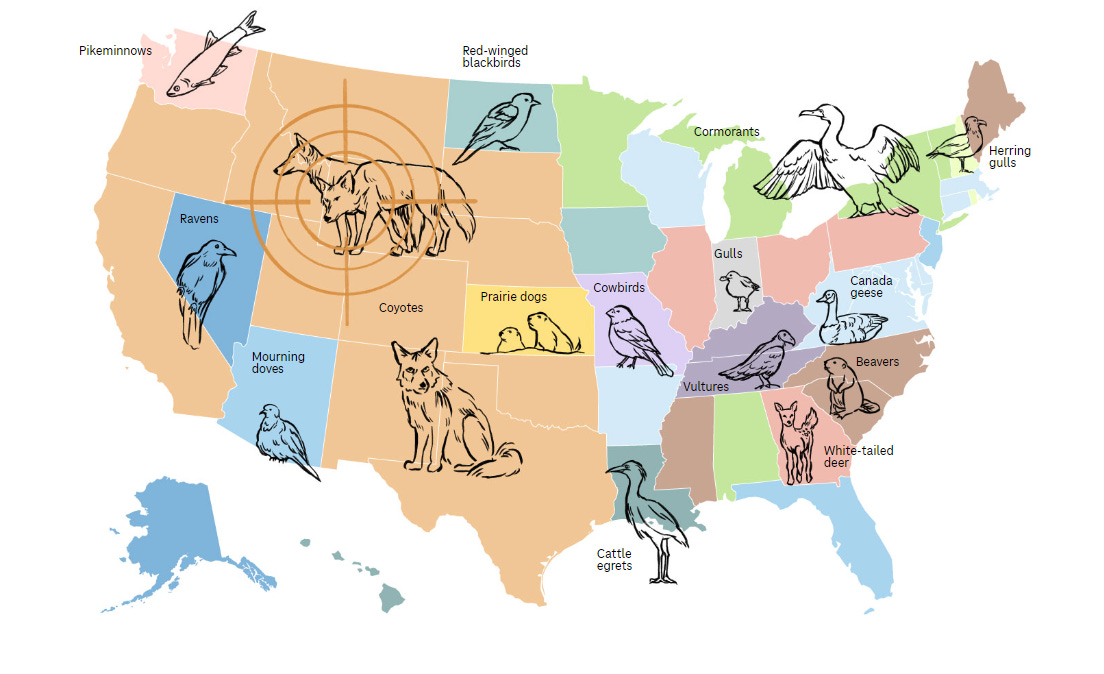Your cat is listening
News and headlines for October 12-17, 2024
In the news: Los Angeles pounds are poorly mismanaged, abusive houses of horrors. Cats understand human language. Colorado voters to decide whether to kill dogs who have done nothing wrong. New director, new attitude, new results. Do you have what it takes to save lives? Communities are looking for someone to run their animal shelters. California bans octopus farming. Study finds the obvious: Turning adopters away reduces adoptions. Your tax dollars at work.
These are some of the stories making headlines in animal protection:
The Los Angeles City Pound is a mismanaged, abusive house of horrors
Dogs at Los Angeles shelters are being euthanized [killed] at a historic rate, according to a new report from the City Controller’s Office…
In August, the most recent available data set, 226 dogs were euthanized [killed] in L.A. shelters — the highest total since at least January 2022. More than 250 cats were euthanized [killed] in July of this year, also the highest since then…
The save rate for kittens reached its lowest point back in July with only 69% saved.
The cause? Incompetent, uncaring, and abusive staff.
In addition to an increase in killings, dogs spend weeks or months inside their filthy kennels without a walk, often without clean water and soft beds to lie on. As a result, they experience increased stress, giving Los Angeles Animal Services an excuse to kill them as “unadoptable” even though they are healthy and of good temperament outside their kennels.
Meanwhile, cat rooms are mostly empty and, in some cases, entirely empty, while staff at the pound turn stray cats away, leading to mass abandonment. Across the street from one of the shelters, volunteers are forced to care for many of those abandoned cats.
A Los Angeles Times investigation also uncovered rabbits with gouged eyes, guinea pigs without food, and hamsters in urine and feces-soaked cages. And when an employee admitted to striking dogs, the volunteer who exposed him was punished, not the abuser.
The Los Angeles County Pound is also a mismanaged, abusive house of horrors
Similarly, the Los Angeles County Board of Supervisors approved a motion that blames anyone and everyone for the killing in their pound system except for those truly responsible — the pound’s director and her incompetent staff. The Supervisors then unanimously embraced a series of proposals that will do little to stem that killing, including supporting statewide legislation should such legislation be introduced. It won’t happen.
In addition to actively fighting statewide legislation to reduce killing, a Los Angeles Times investigation found that the county is killing more dogs despite declining intakes, “promises to save them,” and building new “state-of-the-art” facilities they claimed would reduce it. The investigation showed that staff members violate county policies when killing dogs, fail to reach out to rescue groups before killing them, and lack sufficient public access hours when working people can visit and adopt animals. The Times, however, missed a crucial reason that explains the alarming increase in killing: staff also choose to kill animals by preventing non-profit organizations and No Kill shelters from saving them even when they request to do so.
To prevent these killings, rescuers sued Los Angeles County under the Hayden Law, which makes that illegal. In a significant victory for rescuers, the Court of Appeal unanimously ruled that under that law, California shelters cannot kill dogs rescuers are willing to save unless those dogs are irremediably suffering or have a documented history of vicious and dangerous behavior. However, the county continues to break the law by imposing policies that allow an illegal end to run around the Court’s ruling. L.A. County may have new state-of-the-art shelters, but they are run with staff mired in an old mindset, and for animals, the results are decidedly deadly.
Cats understand human language
Researchers were skeptical when a speech-language pathologist created a device that allowed her dog to tell her exactly what she wanted — food, nap, belly rub, walk, park, beach, or ‘it would make me happy if we played ball outside.’ Did Stella understand the meaning of the words?
A recent study from UC San Diego reveals that dogs trained with soundboard buttons can understand specific words. Researchers used advanced brain imaging techniques to analyze responses to spoken words. They found that dogs process human language similarly to ours, with particular areas of their brains reacting to familiar words and commands.
But what about cats?





